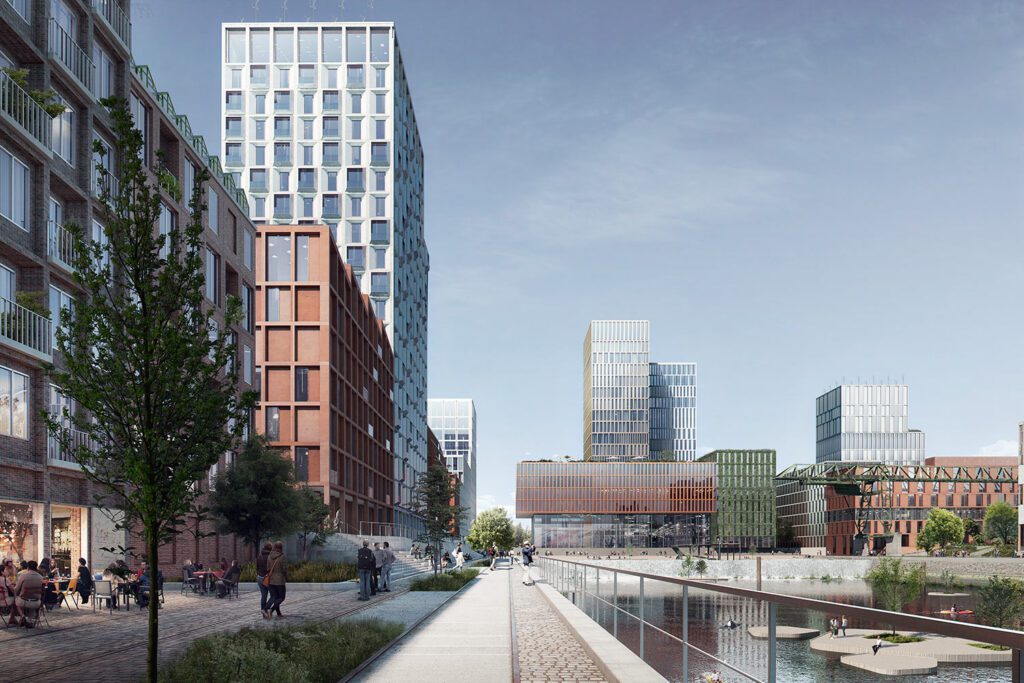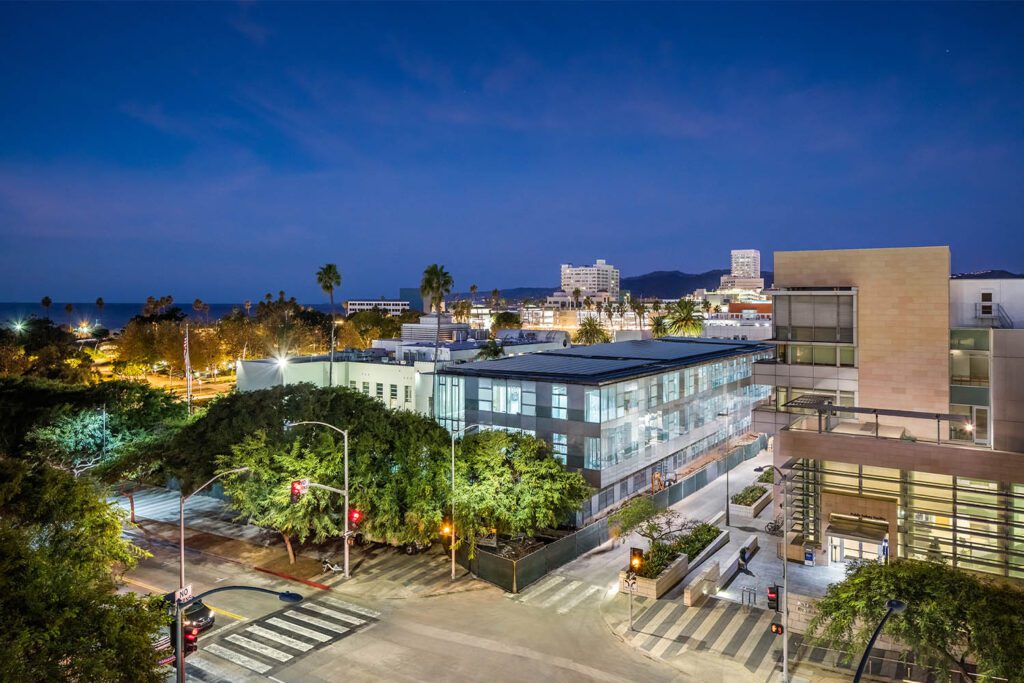GSR21: health, wellbeing and equity
The people paying the greatest price for climate change are those with the least amounts of resources to combat it. Rising temperatures, flooding, wildfires, pandemics, and other shocks and stresses disproportionately impact vulnerable marginalised communities who are less resilient to recover from these events.
As buildings generate nearly 40% of annual global emissions, there are many things that we in the AEC industry can do to address these inequalities. Actions primarily revolve around decarbonising our building stock and providing a platform for those not typically involved in decision-making processes.
We must understand the impact and social value of our work. This means embedding equity in all our projects, amplifying the voices of those most impacted by climate change, and ensuring that critical investment goes to the communities that need it the most.
The AEC community must continue to lead change as we transition towards decarbonisation, strengthening our resolve to make the green recovery healthy, resilient, sustainable and more equitable for all. To achieve this, we aim to:
- Join aligned organisations and support them in their advocacy efforts
- Embed equity into our approach and team makeup when pursuing a project
- Hold an equity workshop during early design phases
- Engage stakeholders meaningfully so they can voice the needs of the community
- Specify materials with consideration, not only for the health of building users, but also for the communities where raw materials are extracted, the manufacturing workers, and the demolition workers who are impacted by our choices.
Designing with a human-centric approach and raising the voices of those affected by our industry will positively impact our designs and will result in more equitable project outcomes. We must all play a key role in advocating and designing with empathy to create a resilient future in which people thrive.
Turning words into actions
In 2018, Buro Happold was appointed by C40 Cities Climate Leadership Group to assist in the development of an Inclusive Climate Action – In Practice report, which outlines how seven cities are taking progressive action to address both social inequality and climate change simultaneously.
We also worked with Liberty Hill Foundation and five ‘anchor’ community-based organisations (CBOs) to design and implement a stakeholder engagement process to aid the development of OurCounty: The Los Angeles Countywide Sustainability Plan.
Currently, the West Hollywood Climate Action and Adaptation Plan sees us working alongside Pueblo Planning to prioritise equity through QTBIPOC populations, who are most vulnerable to the impacts of the planning process but often left out of consultations.
We should try to be honest, considerate and trustful in our dealings, refuse to design or deal in things which are hurtful to society, and should not make a profit at the cost of the community.”
Sir Ted Happold
Happy people, healthy planet
We need to approach every project with a holistic view on health, wellbeing and social equity. This means understanding the importance of users in the economics of design so we can move beyond first costs to look at the triple bottom line (TBL) of people, planet and profit. Early collaboration among the team, and engagement of stakeholders in both the problem-solving and decision-making process, will enable us to design healthy, high-performance spaces.
Given that we spend 90% of our time indoors, we should feel confident that our surroundings support our health, wellbeing and quality of life. Proper ventilation and air filtration can eliminate odours, allergens and viruses that inhibit cognitive function or cause illness. Other critical areas of focus include water quality, green cleaning, access to nature, inspiring movement, comfort, and disposal of waste.
Designing for everyone
At Buro Happold, we believe that great design is inclusive from the start. This year, our inclusive design team has grown and we now have eight specialists providing design advisory services for high-profile projects such as the Future Olympia development, Moorfields Eye Hospital and UCL Institute of Ophthamology and new facilities for the Guide Dogs Association.
The team is also expanding its consultancy offer to provide a trusted advisor service to an increasing list of clients. This role involves providing best practice advice, as well as writing policy documents and external guidance for public sector organisations. To date, we have contributed content to the BSI COVID-19 Safe Working Guidelines and undertaken technical authorship of PAS 6463: Design for the Mind: Neurodiversity and the Built Environment, a new British standard providing design and management guidance to reduce sensory overload for people with sensory processing differences. The guidance is out for public consultation until early November and will be published in its final format in Spring 2022.
We are all multi-dimensional, there is no one-size-fits-all.
Jean Hewitt, Senior Inclusive Design Consultant at Buro Happold
Change comes from within
As we learn how to navigate our way through the effects of the pandemic, Buro Happold’s internal practices continue to focus on our inclusion efforts through an equity lens.
Our commitment to Equity Above All Else remains strong. We are proud to see the collective efforts of our employees come to life through our project work, and the benefit this brings to the communities we serve.
As a global business, we have concentrated on ensuring that each of our regions has a clear plan of action as outlined in their regional equity plans. Within these plans are metrics that highlight improved representation of minority groups, more complete demographic data collection, gender pay gap reductions and insights into retention.
By adopting a model of continual listening, we will use data to help us better understand the employee experience, which allows us to measure inclusion at Buro Happold. We are dedicated to monitoring our progress and holding ourselves accountable through improved people analytics. Analysing and publishing our UK Ethnicity Pay Gap for the first time is an example of this.
In response to the findings of our externally led Inclusion Audit, we are looking at ways to enhance our supplier diversity. Engaging with minority or women-owned business collaborators is a priority for us. Moreover, we are helping all those we engage with on their inclusion aims where possible.
In partnership with trusted organisations and leading institutions, we are continuing to work to reduce barriers into entering the architecture, engineering and construction (AEC) industry. In addition, we are engaging with mentoring and internship programmes such as #10,000 Black Interns, the ACE Mentor Program, The Intern Project, and the RAE Engineering Leaders Scholarships scheme. In turn, we are increasing the breadth of our talent pipeline through ensuring opportunities to enter the profession are available to everyone, including marginalised communities.
Building on the work we have done over the past 12 months on inclusive behaviours and leadership, we have chosen allyship as our 2022 focus. We recognise that this is a life-long process of building relationships based on trust. Therefore, we are equipping ourselves with the knowledge and tools to actively promote and advance inclusion at Buro Happold and within the AEC industry as a whole.
Our 2021 Culture Survey revealed that 98% of employees feel that they have a responsibility for creating an inclusive culture. Our next step is ensuring that everyone has the tools and confidence to do this comfortably. Creating psychologically safe spaces for employees will be key to our success.
We are excited to be working and learning as one collective global practice. Together, we are shaping a more inclusive and equitable future for ourselves and our communities.









